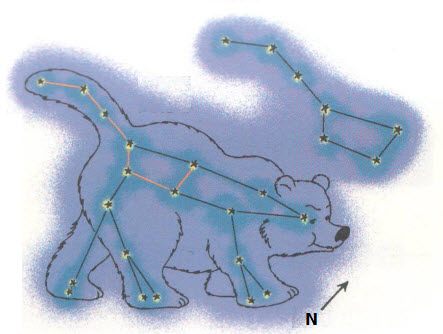The Big Dipper is Not a Constellation–It is an Asterism.
Astronomy is a topic that many avoid when choosing a science project topic. This is because many think you have to have an expensive telescope to do studies. NOT SO!!!
There are so many wonderful studies that can be done with your unaided eye–your naked eye.
We live in such a hurry scurry world that many never stop and study the wonders in the night sky. Most can find the Big Dipper–few know that it is an aster-ism, which is a pattern of stars within a constellation.
Many think that the brightest star in the sky is the North Star–it would only take a few minutes to determine that this is not correct if they gave it much thought. What is seen as the brightest star is really a planet–Venus–reflecting sunlight.
Venus is never in the northern sky. Instead, Venus is seen in the East or West but never in between. How can this happen? Because Venus is a planet between Earth and the Sun. Venus orbit the Sun, just as the Earth does. When Venus is behind the Sun, observers from Earth cannot see the planet. When Venus is in front of the Sun, between the Sun and Earth, the brightness of the Sun prevents observers on Earth from seeing the planet. Only when Venus is to the sides of the Sun during it orbit is it visible to observers on Earth. But this only happens when the Sun is below the horizon at sunrise and sunset. Once the Sun rises, its light is so bright that Venus is no longer visible to observers on Earth.
To get you started on studying the celestial bodies in the nighttime sky, find out how you can measure apparent distances between celestial bodies using your hands. This information is found here—-> ASTRONOMY SCIENCE FAIR PROJECT
Astronomy Projects Using Astronomy Statements
Astronomy Science Fair Project Questions
Using Astronomy Facts to Design Astronomy Science Fair Projects
 |
Janice VanCleave’s A+ Projects in Astronomy: Winning Experiments for Science Fairs and Extra Credit |
